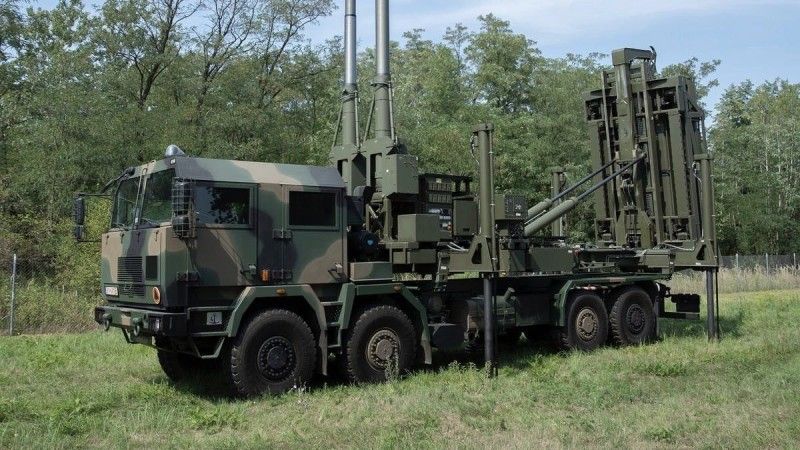Industry
Poland To Sign Another Major Defence Procurement Deal: Polish-British Air Defence Solution Coming Up

Photo. MBDA
Negotiation has come to an end, on the developmental version of the combined AAA/SAM Pilica system. The agreement would be signed in early September, Defence24.pl found out off the record. This contract, worth billions, would see the Polish Armed Forces procure 21 new Pilica batteries, involving a new variant. These systems are manufactured by ZM Tarnów primarily, but the new version would also utilize the MBDA’s CAMM missile. This would result in a maximum range extension, from ca. 6.5 km to more than 25 km.
The unofficial information that Defence24.pl obtained suggests that the contract on delivery of the new Pilica variant, worth billions, would be signed in early September. The negotiation has come to an end, however, the formal requirements may delay the conclusion - the signing may take place after the MSPO event in Kielce, happening from 6th until 9th September. The Pilica+ system would be delivered by a consortium led by the PGZ Group (in a manner identical to the one applicable to the base variant). However, the capabilities offered by the "+" version would be much greater. Not only would it be integrated with VSHORAD assets, but also with the CAMM launchers - with their range exceeding 25 kilometres.
The above means that Pilica would also provide layered air defence capability against cruise missiles (including supersonic ones), fixed- and rotary-wing assets, and UAVs. This would greatly expand the system's kill zone. Originally it was only armed with SAMs offering a range of up to 6.5 km. The framework agreement planned to be signed is expected to have a delivery deadline set in 2027. Up until then, the Polish Armed Forces could receive up to 21 Pilica+ system batteries. The contract would also cover the procurement of a proper stockpile of CAMM missiles (ca. 700).
Pilica+ - What it really is?
Recently, rumours were being circulated about the potential expansion of the Pilica system. It is to be named Pilica+. The assumption was to reinforce the command system and allow for broader integration with IADS, with the use of domestically-developed solutions. The main task assigned to the Pilica+ system is to act as a direct defence asset for the Patriot batteries - Polish, or ones deployed by the allies. All of that would reduce the potential workload imposed on the Narew system batteries.
The baseline Pilica configuration included a C2 system, radar, and effectors: six ZUR-23-2SP combined AAA/SAM systems using the 23 mm cannons and Grom/Piorun MANPADS, featuring an advanced fire control system based around optoelectronics, also accompanied by support and logistics elements. Several PGZ companies were involved in the undertaking - ZM Tarnów (technical lead, manufacturer of the fire unit), PIT-RADWAR, PCO, Jelcz, and so on.
During the work on the Pilica system, domestic capabilities in air defence fire control have been expanded, including the capability to counter multiple threats at once. The command system itself is based on an open architecture. During the tests that had taken place before the series manufactured Pilica systems were put into operational use, a Polish 35 mm gun was also tested with the C2 solution.

Photo. PGZ
A fusion of experience between the Pilica, and "Little Narew" systems, with the latter having been procured in April, for the newly formed air defence regiment of the 18th Mechanized Division, made it possible to take another step - procurement of the Pilica+ system that would happen soon. The Pilica+ solution would be a Polish VSHORAD/SHORAD system that can effectively protect Patriot batteries, and act against multiple threats at once. It would be possible to sign the contract in so rapid manner because development efforts have been going on for years, with know-how and expertise being gathered during that period. Currently, following the gradual increase of defence expenditure, the results may be put into use to a greater extent. The Pilica+ C2 system would make use of the solutions developed for the SAMOC suite.
Pilica+ would hence become another step in the process of reinforcing the Polish air defence component. Poland's air defence component is undergoing major changes now. Certainly, the commissioning of a major quantity of new equipment may be viewed as a challenge, given the fact that 2022 would be the first year in more than 3 decades, in which the Polish military would receive new generation air defence systems with a range exceeding 7 kilometers. This refers to the "Little Narew", and to some of the Wisła system elements, where the operational readiness is expected to be achieved later on. Let us recall, that Poland has also submitted a Letter of Request this year, aimed at procuring another 6 IBCS/Patriot systems for Wisła. Head of the Polish Ministry of Defence, Mariusz Błaszczak released this information during the Defence24 DAY conference.
Jędrzej Graf, Jakub Palowski
